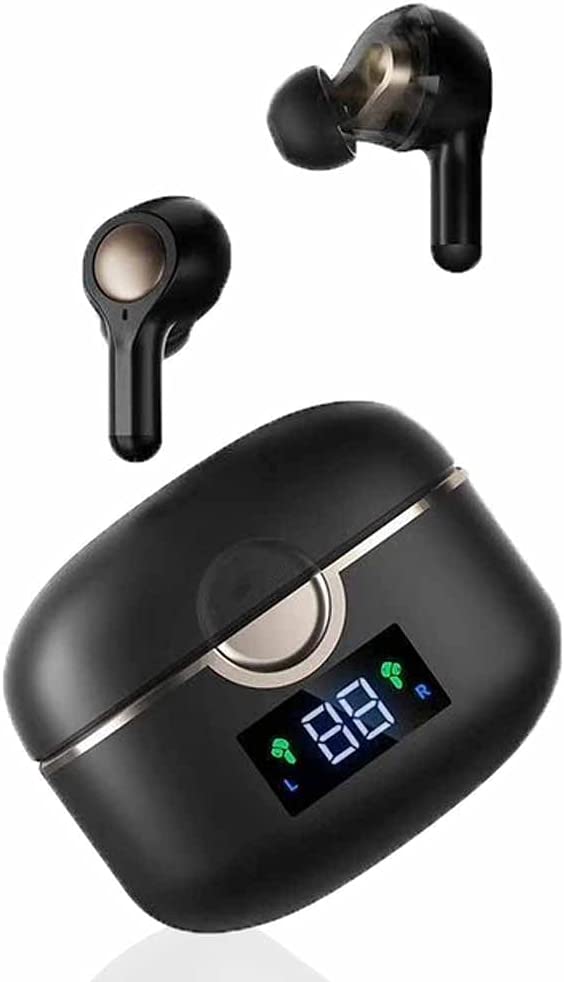Denon AVR-X3800H: Unlock Immersive 8K Home Theater Audio
Update on Feb. 28, 2025, 7:51 a.m.
The Allure of Immersive Home Theater
Imagine stepping out of the everyday and into the heart of your favorite film. The roar of a spaceship engines doesn’t just fill the room; it vibrates through you. A whisper behind you is so real, you instinctively turn your head. This is the promise of immersive home theater – to transcend the limitations of a traditional viewing experience and create something truly captivating. And at the heart of this transformation often lies a crucial component: the AV receiver.

Beyond “Just Loud”: Understanding Sound in Your Room
Before we delve into the specifics of a particular receiver, it’s essential to understand a fundamental concept: your room itself is the biggest factor in how your audio system sounds. It’s not just about the speakers; it’s about how sound waves interact with your room’s walls, floor, ceiling, and furniture.
Think of dropping a pebble into a calm pond. The ripples spread out evenly. Now imagine dropping that same pebble into a bathtub. The ripples bounce off the sides, creating a chaotic mess of overlapping waves. Sound waves behave similarly. They reflect off surfaces, creating areas of constructive interference (where sound is amplified) and destructive interference (where sound is diminished). These interactions, called room modes or standing waves, can drastically color the sound, making certain frequencies boom while others disappear. This is why a sound system that sounds fantastic in one room might sound muddy or unbalanced in another.

Introducing the Denon AVR-X3800H: More Than Just an Amplifier
This is where the Denon AVR-X3800H comes in. It’s far more than just an amplifier; it’s the central nervous system of a modern home theater. It receives audio and video signals from your various sources (Blu-ray player, game console, streaming device), decodes and processes those signals, amplifies the audio, and sends it to your speakers and subwoofer(s). But the AVR-X3800H goes far beyond these basic functions, offering a suite of advanced technologies designed to deliver an unparalleled level of sonic and visual fidelity.

Decoding the Numbers: Channels, Subwoofers, and Spatial Audio
You’ll often see designations like “9.4-channel” associated with AV receivers. Let’s break that down. The “9” refers to the number of main speaker channels: front left, center, front right, surround left, surround right, two rear surrounds, and two height channels. Those height channels are key for the immersive magic. The “.4” indicates the number of independent subwoofer channels.
Why four subwoofers? While one subwoofer can certainly provide bass, multiple subwoofers, strategically placed, can significantly improve the evenness of bass response throughout the room. Think of it like lighting a room: one bright lamp in a corner will create harsh shadows and uneven illumination. Multiple, smaller lamps can provide a much more balanced and pleasing light. The same principle applies to bass frequencies.
This 9.4-channel configuration allows for a truly enveloping soundstage, especially when combined with object-based audio formats like Dolby Atmos, DTS:X, and Auro-3D. These formats don’t just send sound to specific speakers; they treat sounds as individual “objects” that can be placed anywhere in a three-dimensional space. Imagine a helicopter flying overhead in a movie. With traditional surround sound, you’d hear it primarily from the front speakers, perhaps with some sound mixed into the surrounds. With Dolby Atmos, the receiver can precisely position the helicopter sound in the height channels, creating the realistic sensation of it flying above you.
The Magic of Audyssey MultEQ XT32: Taming Your Room’s Acoustics
Remember our bathtub analogy? Audyssey MultEQ XT32 is like a sophisticated acoustic “drain” that smooths out those chaotic sound waves. It’s a powerful room correction system that automatically calibrates your audio system to compensate for the unique acoustic characteristics of your room.
Here’s how it works: You connect the included microphone to the AVR-X3800H and place it in multiple listening positions throughout the room. The receiver then plays a series of test tones through each speaker and subwoofer. The microphone “listens” to these tones, measuring the frequency response and time delays at each location.
This is where the real magic happens. Audyssey MultEQ XT32 uses sophisticated digital signal processing (DSP) algorithms to create custom filters that counteract the negative effects of your room’s acoustics. It can tame boomy bass, smooth out uneven frequency response, and improve the overall clarity and imaging of your sound system. It’s like having a professional acoustician fine-tune your home theater for you. It does this by analyzing both the frequency domain (how loud each frequency is) and the time domain (when each frequency arrives at the microphone). This time-domain correction is crucial for ensuring that sounds from different speakers arrive at your ears at the correct time, creating a coherent and accurate soundstage. Think of it like perfectly synchronizing an orchestra – each instrument (speaker) needs to play its part at precisely the right moment for the overall performance to sound its best. Audyssey’s filters act like a conductor, ensuring that all the sonic elements arrive in perfect harmony.
HDMI 2.1: The Gateway to 8K and Beyond
The Denon AVR-X3800H isn’t just about amazing sound; it’s also about stunning visuals. It features six HDMI 2.1 inputs and three outputs, all supporting the latest video standards, including 8K/60Hz and 4K/120Hz pass-through. But what does that really mean, and why is it important?
HDMI (High-Definition Multimedia Interface) is the standard for transmitting high-quality digital audio and video signals. HDMI 2.1 is the latest iteration, and it offers a significant increase in bandwidth compared to previous versions. This extra bandwidth is essential for handling the massive data requirements of 8K resolution (four times the resolution of 4K) and high frame rates (120 frames per second).
Beyond the resolution and frame rate boost, HDMI 2.1 brings several other key features to the table, particularly beneficial for gamers:
-
eARC (Enhanced Audio Return Channel): This allows high-bitrate audio formats like Dolby Atmos and DTS:X to be transmitted from your TV back to the receiver over a single HDMI cable. This simplifies your setup and ensures you’re getting the best possible audio quality from your TV’s built-in apps and other sources. Previously, you might have needed a separate optical cable for this, which could limit the audio quality.
-
VRR (Variable Refresh Rate): Imagine playing a fast-paced video game. The frame rate (the number of images displayed per second) can fluctuate depending on the complexity of the scene. Without VRR, this can lead to screen tearing (where parts of the image are misaligned) and stuttering. VRR synchronizes the refresh rate of your display with the output of your game console or PC, eliminating these issues and creating a smoother, more responsive gaming experience.
-
ALLM (Auto Low Latency Mode): When you switch to a game console, your TV might have various picture processing settings enabled (like motion smoothing) that can introduce input lag – a delay between your button presses and the on-screen action. ALLM automatically switches your TV to its lowest latency mode (often called “Game Mode”) when it detects a game console, minimizing this lag and giving you a competitive edge.
-
QFT (Quick Frame Transport): This is another technology designed to reduce latency. It works by speeding up the transmission of each individual frame of video, further minimizing the delay between your actions and the on-screen response. Think of it as streamlining the delivery pipeline for your video signal.
HEOS: Your Whole-Home Audio Ecosystem
The AVR-X3800H isn’t limited to just your home theater room. With HEOS Built-in, you can create a wireless multi-room audio system. HEOS allows you to stream music from popular services like Spotify, Pandora, Amazon Music, TIDAL, and more, all controlled through a user-friendly app on your smartphone or tablet.
Imagine this: You’re hosting a party. You can have the same music playing throughout your house, creating a unified atmosphere. Or, you can have different music playing in different rooms – jazz in the dining room, pop in the living room, and classical in your study. You can group rooms together, control the volume independently, and even stream high-resolution audio files. HEOS essentially turns your home into a connected audio ecosystem. The built-in Wi-Fi and Bluetooth connectivity make it all possible.
Connecting the Dots: A Typical Setup Scenario
Let’s walk through a simplified setup to illustrate how the AVR-X3800H fits into a home theater system.
-
Connections: You’d connect your source devices (Blu-ray player, game console, streaming box, cable box) to the HDMI inputs on the AVR-X3800H. Then, you’d connect the HDMI output from the receiver to your TV or projector. Finally, you connect your speakers and subwoofers to the corresponding speaker terminals on the back of the receiver, paying careful attention to polarity (+ and -).
-
Speaker Configuration: Using the receiver’s on-screen menu (which is displayed on your TV), you’d specify your speaker configuration (e.g., 5.1.4, 7.2.2, etc.). This tells the receiver how many speakers you have and where they’re located.
-
Audyssey Calibration: This is a crucial step. You’d plug in the included Audyssey microphone and follow the on-screen prompts to run the calibration process. The receiver will play test tones through each speaker and subwoofer, and the microphone will measure the sound at various listening positions.
-
Source Selection: Once everything is connected and calibrated, you can use the receiver’s remote control or the Denon AVR Remote app to select your desired source (e.g., Blu-ray, Game, Streaming) and adjust the volume.
-
Enjoy!: With this, it’s all set.
Beyond the Specs: The Denon Legacy
Denon isn’t a newcomer to the audio world. With over a century of experience in audio engineering, the company has a long-standing reputation for quality and innovation. This heritage is reflected in the AVR-X3800H, which is built with high-quality components and meticulous attention to detail. This isn’t just about fancy specifications; it’s about the long-term reliability and performance that Denon is known for.
A Sound Investment: Making Informed Choices
The Denon AVR-X3800H represents a significant investment in your home entertainment system. It’s a device designed to be the central hub of your audio and video experience for years to come. While it’s certainly not the cheapest option on the market, its combination of advanced features, powerful performance, and future-proof connectivity makes it a compelling choice for serious home theater enthusiasts.
Ultimately, the best AV receiver for you depends on your specific needs and budget. But if you’re looking for a powerful, versatile, and feature-rich receiver that can deliver a truly immersive home theater experience, the Denon AVR-X3800H is undoubtedly a top contender. It’s a testament to how far home theater technology has come, and a glimpse into the exciting possibilities that lie ahead.



























































